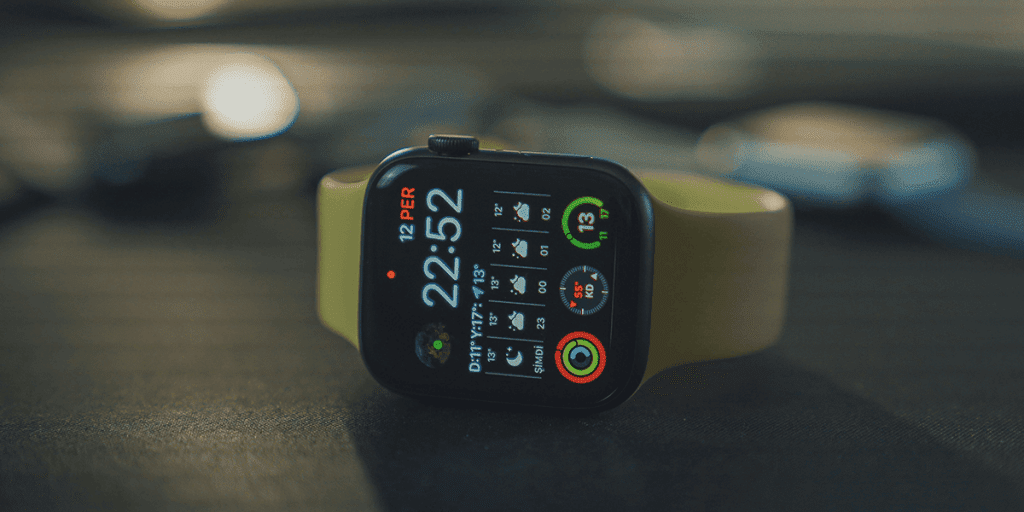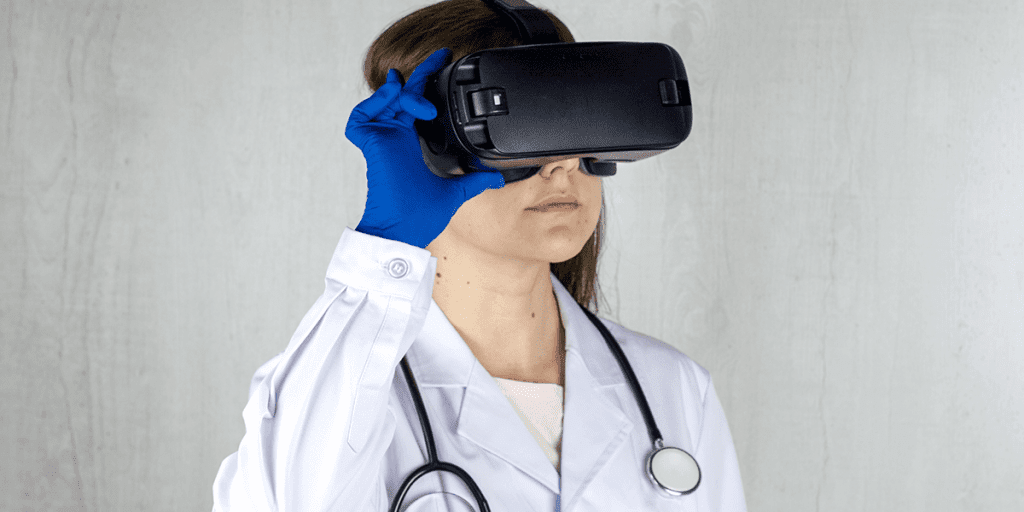Imminent Technology Trends Transforming the Healthcare Industry: Why Legacy Systems Need an Upgrade?
The healthcare industry faces a “technological revolution” meant to redefine how we receive medical care and how professionals deliver their services. Nowadays, technology is embedded into every market sector and our day-to-day life. From artificial intelligence (AI) and virtual reality (VR) to the Internet of Things (IoT) and telemedicine, transformative technologies are reshaping the landscape of healthcare.
We will discuss the imminent technology trends set to revolutionise the healthcare industry and delve deeper into legacy systems and why it’s time to upgrade them. We will shed light on the benefits and bottlenecks of technological trends and their integration with legacy systems.
What Are Legacy Systems: Definition and Characteristics?
A legacy system refers to outdated technology, encompassing older computer hardware, software applications, programming languages, and operational procedures that businesses continue to utilise. Moreover, legacy systems can put companies at risk, and they carry the risk of critical failures due to a lack of expert knowledge and documentation loss.
When older systems stop receiving updates, it’s only a matter of time before a crisis disrupts operations, and such emergencies are barely predictable. This can result in prolonged suspensions of critical functions, leaving businesses in a precarious position if it proves challenging to source expert assistance.
Even if legacy systems are relatively recent, the swift pace of technological advancement renders many newer innovations out-of-date in short timeframes, necessitating ongoing updates and financial reinvestments.
In the healthcare industry, legacy systems refer to the outdated technology infrastructure, software applications and hardware that have been in operation for an extensive period. These systems, which have often been used for years, sometimes spanning decades, have undergone numerous adaptations and adjustments to meet evolving demands
Now, let’s dive into the legacy systems characteristics in the healthcare industry:
- Longevity: healthcare systems have a prolonged lifespan, and they were initially implemented a very long time ago. They have undergone the test of time because of healthcare operations’ complexity and critical nature.
- Rigid Architecture: they often have a static architecture that makes it difficult to modify and update. Moreover, these legacy systems are usually not designed to accommodate modern features and functionalities that have become standard in newer systems.
- Proprietary Technology: refers to relying upon owning software or hardware that may no longer be supported by modern vendors and can lead to issues when specialised and dedicated components need to be replaced.
- Limited Interoperability: communication and data sharing with new systems may be a struggle within the organisation and externally. The lack of interoperability can hinder data exchange and collaborative efforts.
- High Maintenance Costs: maintaining system operations and troubleshooting can be expensive because they need specialised expertise. Moreover, licensing fees for outdated software and hardware can be costly.
How Do I Know It Is Time to Upgrade My Legacy System?
While legacy systems have served their purpose well in the past, they are becoming inefficient in today’s evolving healthcare technology landscape, which will lead to security risks and hindered innovation, among other issues. The growing need for healthcare organisations to upgrade and replace their old systems with more modern, adaptable, and interoperable solutions signals the time for a custom software implementation.
Upgrading a legacy system is a crucial decision for any organisation, and here are the key indicators and considerations to help you determine when it’s time to switch to a present-day solution:
1. Technology and Sofware Issues
One of the most obvious and clear signs that your legacy system urgently needs an update is when the original vendor announces the end of support for your system. Without vendor support, you risk security vulnerabilities and may struggle with the system’s functionality. This is a serious issue as the healthcare sector is the most common victim of cyberattacks (33%of the incidents in 2021). Moreover, obsolete hardware can slow down the overall performance and limit your ability to incorporate new technologies.
2. Inefficient Workflows
When your staff members, medical professionals and administrators report inefficiencies or productivity bottlenecks related to the legacy system, it is time to explore modern alternatives that streamline workflows. Moreover, manual workarounds that compensate for the software limitations can lead to errors and increased workload.
3. Integration Limitations
It’s time for collaboration and real-time decision-making when you deal with limitations and struggle to integrate newer systems, leading to data silos and deficiencies in sharing information across departments or with external partners. Compatibility issues with modern communication protocols or APIs (Application Programming Interfaces) are also an indicator that it is now the time to adopt new technologies and services.
4. Security Vulnerabilities

Out-of-date security measures and the presence of unpatched vulnerabilities in your legacy system can expose your organisation to data breaches and cyber threats. Moreover, non-compliance with current data protection and privacy regulations can lead to regulatory fines and legal consequences.
5. High Maintenance Costs
When the ongoing maintenance costs for your legacy system are escalating, and these costs outweigh the benefits of retaining the system, it’s a strong indicator that an upgrade could be cost-effective in the long run.
6. Scalability and Growth
If your healthcare company is expanding, the software solution must accommodate the growing needs. When your system cannot easily scale and accommodate the growing patient volume, new facilities or features, it can hinder operational growth.
7. User Frustration and Resistance

Consistent negative feedback from system users regarding its usability, speed, or limitations should not be ignored, as it may indicate a need for an upgrade. Moreover, if healthcare providers and medical professionals are resistant to using legacy systems and instead prefer manual processes to avoid frustration, it is a sign that your current solution is not meeting their needs.
8. Evolving Organisational Needs
If your organisation is undergoing mergers or acquisitions, your current legacy system might no longer align with the new strategic direction, necessitating a technology refresh. Also, when your focus shifts towards value-based care or telemedicine, you might need a more flexible and up-to-date technology infrastructure.
9. Competitive Disadvantage
When competitors or peers in the healthcare industry are adopting new technologies to enhance patient care, you may risk losing your competitive edge if you don’t upgrade.
10. Evolving Patient Expectations and Needs
As patient expectations evolve towards more personalised and convenient care, modern technology solutions are often required to meet these demands. From online appointment scheduling and online consultations to remote patient monitoring, your company must accommodate users’ needs and expectations.
What To Take Into Consideration When Upgrading Your Legacy System?
When considering updating your legacy system, we strongly advise you to take into consideration a series of steps to ensure a smooth transition. We recommend a systematic approach and creating a straightforward plan. Therefore, you can follow this checklist:
- Start by evaluating your current legacy software to identify the strengths and weaknesses. Make sure your analysis is comprehensive in the interoperability with modern technologies. Take the weaknesses and write down all the areas that must be improved.
- Next, we suggest crafting a list with clear objectives and goals for your legacy system updates. Based on your needs, you can focus on removing security issues, streamlining business processes and business operations, enhancing overall performance, or complying with the regulatory systems. This step will help you in the decision-making process.
- Create a roadmap describing the upgrading process. We recommend splitting this process into multiple phases and focusing on first solving the most essential functionalities and components. Take into consideration your resources, timeline and available budget.
- It’s now the time to research and select the technologies that best align with your goals and specific requirements. We strongly recommend you include elements such as scalability, vendor support, long-run growth, and integration capabilities. We also recommend partnering with technology experts or a software development company to implement the right digital solution from the start.
- The next step is data migration, which requires meticulous planning and execution. Healthcare organisations or medical institutions handle sensitive data such as medical records, patient history, personal information, etc. Because of this, ensuring data integrity during the migration process is detrimental. Moreover, at the end of the process, we recommend exhaustive testing. This action will ensure the accuracy and integrity of the data.
- Before implementing the new system, we recommend creating a training program for your employees. This will facilitate the adoption of the new technology, and your staff will have the knowledge and skills to use it effectively.
- Now it’s time to implement the legacy systems upgrades. You can start small with a pilot step that involves only a few employees or one department. Doing so lets you gather valuable insights and feedback and make suitable adjustments before implementing your new system across the company.
- The last step is to monitor and optimise your system to guarantee you will move forward with fewer risks.
5 Imminent Technology Trends Transforming the Healthcare Sector
The healthcare industry is undergoing a digital transformation driven by rapid technology advancements. Healthcare professionals now have the opportunity to focus on patient care and boosting their performances instead of spending a lot of time on bureaucracy and faulty workflows. From artificial intelligence (AI) and virtual reality (VR) to telemedicine and remote patient care, these innovations reshape how healthcare is delivered, accessed and managed.
Let’s explore the 5 imminent technology trends transforming the healthcare industry:
1. Internet of Things (IoT) and Medical Devices
Integrating the Internet of Things (IoT) with medical devices allows healthcare providers to access data in real-time, personalise patient care and improve overall outcomes. The IoT is a network of physical devices that are embedded with sensors, software, and other technologies. Its purpose is connecting and exchanging data with other devices and systems with an internet connection. Medical devices are used in diagnosing, treating, monitoring, or preventing diseases.
IoT and medical devices are interconnected in various ways. We will give you some examples:
- Wearable devices track patients’ vital signs and activity levels remotely. With the help of IoT, this data can be transmitted to healthcare providers, who can use it to monitor patient’s health and identify any potential health problems early.

- Medical dispensers can be connected with the Internet of Things and automatically dispense medication to patients at scheduled times. This can help improve medication adherence.
- Hospital beds can be IoT-enabled and monitor patients’ movements and send alerts if a patient falls out of bed. This improves patient safety.
The Global IoT in Healthcare Market size is anticipated to grow to 289.2 billion USD by 2028. This growth will be influenced by the advancements in healthcare infrastructure, medical devices and the digital transformation of the healthcare industry.
2. Artificial Intelligence (AI)
Artificial Intelligence (AI) impacts various aspects of healthcare, from clinical diagnosis and treatment to administrative tasks and patient experience and engagement. When you deal with large amounts of medical data, such as patient records, imaging results, and clinical trial data, this cutting-edge technology helps you identify patterns and trends humans may be unable to see.
Let’s explore together how AI is being used in the healthcare industry today:
- AI-powered diagnostic tools can help medical professionals to diagnose diseases more accurately and effectively. An AI-powered image analysis tool can more accurately identify cancer cells in medical images than human doctors.
- AI-powered drug discovery tools can accelerate the drug discovery process by identifying new drug targets and predicting drug efficiency.
- AI-powered patient monitoring tools are used to monitor patients’ health remotely.
- AI-powered administrative tools can be used by medical facilities to automate administrative tasks, such as scheduling appointments, processing insurance claims, and maintaining medical records. AI-powered chatbots can be used to answer patients’ questions and schedule appointments.
86% of healthcare providers, life science companies, and technology vendors are already using AI technologies.
3. Virtual Reality (VR) and Augmented Reality (AR)

Virtual and augmented reality are powerful technologies that provide immersive and interactive experiences that can enhance medical training, improve patient care and transform how healthcare professionals engage with data and simulations.
This innovative technology is used in the healthcare industry for:
- VR surgery training is used to train surgeons on how to perform complex procedures, such as open-heart and brain surgery. VR simulations allow surgeons to practice in a safe environment and receive feedback on their performance.
- AR patient education is used to educate patients about their condition and treatment plan. AR helps patients with cancer to visualise their tumours and the path of their surgery. Moreover, AR is also used to help patients with chronic diseases, such as diabetes and heart disease, learn to manage their condition.
- VR pain management is used to distract patients from pain and anxiety during medical procedures, such as helping children undergoing MRI scans and chemotherapy treatments. VR is also used to help burn patients manage their pain.
- AR physical therapy and rehabilitation are used to create engaging and interactive exercises. Patients who have had a stroke will undergo AR physical therapy to recover their mobility, and patients with Parkinson’s disease will be able to improve their coordination.
- VR mental health treatment is used for anxiety, depression and phobias. In PTSD treatment, VR is used to overcome fears and for patients with social anxiety to learn how to interact with others in a safe environment.
Based on a Business Fortune Insights report, the VR global market will grow at a CAGR of 38.3%, rising from $1.2 billion in 2021 to $11.6 billion in 2028.
4. Digital Therapeutics (DTx)
Digital therapeutics (DTx) are software-based interventions that are designed to prevent, manage, or treat a medical condition. DTx can be used to deliver a variety of therapies, including cognitive behavioural therapy, mindfulness-based stress reduction, and medication management. Digital therapeutics improved patient outcomes by providing personalised support and guidance, reducing costs by providing patients with more affordable and convenient care options, increasing access to care for patients who live in rural or underserved areas, and empowering patients to have more control over their health.
The implementation of this technology in healthcare is used for:
- DTx for diabetes, where patients can track their blood sugar levels, manage their diet, and take their medication as prescribed.
- DTx for mental health, where patients are provided access to therapy without having to travel to a doctor’s office. Mobile apps such as Talkspace allow patients to connect with a licensed therapist via video chat or text message.
- DTx for chronic disease management provide patients with the support they need to manage their condition at home. A patient can monitor their symptoms and medication through mobile applications.
DTx saw a rapid increase because of the COVID-19 pandemic, and the US DTx market will reach 5.08 billion dollars by 2027.
5. Telemedicine

Telemedicine offers a wide range of benefits that facilitate remote healthcare services, such as consultations, diagnosis, treatment, monitoring, and education. Patients have access to professional care by using a computer or mobile devices. Telemedicine visits are often less expensive than in-person visits and more convenient, as they can be scheduled at times that are convenient for patients because they can avoid long waiting times.
Telemedicine is being used in healthcare nowadays for:
- Chronic disease management – medical professionals with patients with chronic diseases such as diabetes, heart disease, or asthma use telemedicine to monitor, manage, and give feedback.
- Mental health – healthcare providers use telemedicine to provide support and mental health services for patients living in underserved areas or having difficulty travelling to see a therapist. Moreover, patients with depression can use telemedicine to connect with a therapist via video chat or phone.
- Urgent care – telemedicine provides urgent care services to patients with minor illnesses or injuries, such as sore throat, a rash, etc. Patients connect with doctors and receive treatment immediately.
The telemedicine global market is rapidly growing and will reach a projected value of $460 billion by 2030.
Our Advice
As outdated legacy systems have served their purpose, transitioning to innovative collusion is mandatory for healthcare organisations to remain relevant, competitive and provide high-value care. We advise healthcare companies to embrace technology trends and consider implementing a custom software development solution. Furthermore, staying informed and proactive, learning and staying updated on the latest technology trends, can boost your company revenue, improve patient care, and have a bullet-proof reputation. Being one of the first to implement emerging technologies that fit your business goals and strategies will set you apart from other healthcare providers. Do not wait until medical technology becomes mainstream. Start exploring and piloting early.
We also recommend you focus on interoperability and integration to prevent data silos and streamline information exchange. Robust security measures and compliance with regulations are crucial steps for you not to omit.
Moreover, we suggest investing in AI-powered solutions, leveraging telemedicine and remote monitoring, expanding telehealth services, implementing IoT-enabled devices and wearables, exploring Virtual and Augmented Reality applications, using user-friendly and intuitive interfaces and offering personalised health solutions and aligning technology investments with organisational goals and fostering a culture of innovation.
By following these pieces of advice, your healthcare company can position itself to leverage technology trends effectively, enhancing patient care, improving operational efficiency, and staying at the forefront of innovation in the healthcare industry.
Frequently Asked Questions
Artificial intelligence (AI), Big Data, Internet of Things (IoT), Virtual Reality (VR), Augmented Reality (AR).
Legacy systems are often outdated and unable to support the latest technology trends. This can lead to several problems, including security risks, inefficiency and lack of innovation.
Upgrading legacy systems can face the following challenges: high development costs, can be complex and difficult to upgrade, and can lead to downtime, disrupting patient care.
Legacy systems can lack the flexibility and adaptability needed to integrate with modern technologies and innovations.